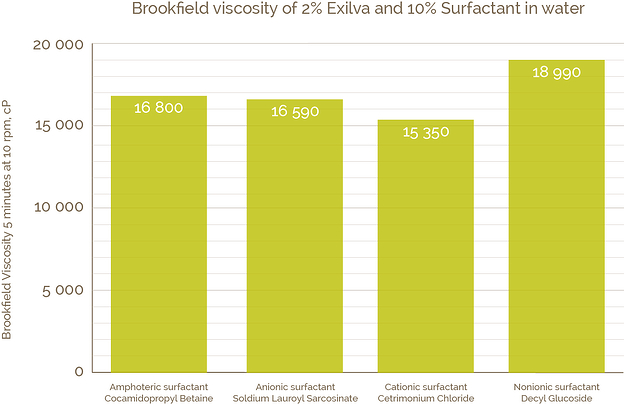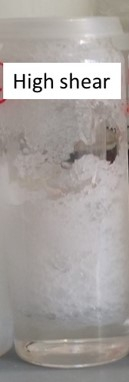
How to use Cellulose fibrils with foam forming surfactants
Rebecca Blell | May 29, 2019
Surfactants are present in most consumer products. The most familiar examples are shampoos, hand wash products and cleaning products in general. Switching to sulfate free surfactants improves the environmental profile, but can be a challenge. Let me show you a way to this.
I will demonstrate that one can use cellulose fibrils to thicken and stabilize formulations with foam forming surfactants. The most important point to remember when preparing such formulations is to avoid foam formation during the incorporation step of surfactants with the cellulose fibrils.
The trend today is to move towards sulfate free surfactants. One of the advantages of doing so is obtaining a better green and environmental profile of formulated products. It is therefore a requirement that the ingredient used to improve the formulation of sulfate free product be safe for use and have an environmentally friendly profile. The disadvantage however is the challenge in finding innovative ways of thickening and stabilizing such systems.
Cellulose fibrils have shown to be very efficient in thickening and stabilizing sulfate free surfactants as shown in Figure 1. They improve rheology and stability due to the three dimensional physical network that is formed in the formulation when the product is dispersed according to recommendations.
It is however very important to understand how best to use cellulose fibrils in a surfactant based systems, especially those with foam forming ability.

Figure 1. Viscosity of 2% Cellulose fibrils suspension in 10% surfactant solution measured with Brookfield viscometer (10 rpm, Spindel V-73).
--> Read more about the compatibility of cellulose fibrils and surfactants.
How can one obtain stable formulations when using Cellulose fibrils and foaming surfactants?
Cellulose fibrils have a very high yield stress. They are very good stabilizers of particles, pigments, capsules, oil droplets as well as air bubbles. The three dimensional network of the cellulose fibrils in a formulation leads to physically holding in place such structures hence enhancing their stability. In the case of air bubbles, cellulose fibrils will stabilize them when formed in a formulation regardless if they are formed during the formulating step or the product use.
The result of such an effect during the incorporation stage can be the unwanted phase separation while during the use of the product, the outcome can be longer and better foam stability, a positive effect.

Figure 2. A picture of a phase separated formulation containing a foaming surfactant and cellulose fibril mixed using high shear.
Figure 2 shows the outcome of mixing cellulose fibrils with foaming surfactants at high shear and allowing the incorporation of air. Due to incorporation of air bubbles and foam, a foaming upper phase and a transparent lower phase are formed after some time leading to phase separation. It is therefore important to avoid foam formation during the formulation step. One should mix the dispersed cellulose fibrils and foam forming surfactants with optimized mixing speed and avoid air incorporation.
Figure 3 is a picture of a stable formulation containing a surfactant and cellulose fibrils. This formulation was prepared without any foam formation during the mixing step of the dispersed Cellulose fibrils and the foaming surfactant.
Cellulose fibrils are dispersed in the water phase using high shear if necessary. The mixing speed was then reduced and the surfactant was added to the cellulose fibrils.

Figure 3: A picture of a formulation containing a surfactant and cellulose fibrils.
Good dispersion is a critical factor for success
As written in an earlier blog post, a general advice when you do not obtain the expected effect in your formulations, is to examine the dispersion method and order of which the ingredients are added. If you suspect there is a problem with the dispersion, it might be a good idea to test different dispersion times and methods and see if this makes a difference.
The take-home message is that when using cellulose fibrils in your formulations, it is very important to notice that good dispersion is a critical factor for success.
Written by:
Rebecca Blell
Rebecca first started working with microfibrillated cellulose in 2009, during her studies, as part of the SustainComp project. She joined Borregaard in 2014 as a research scientist and focused on the Exilva product and its performance in cleaning products, cosmetics and agricultural applications. She is now working as the Technical Application Manager for these applications in parallel to being Technical Sales Manager for Exilva products in France and UK. Rebecca has a PhD in physical chemistry from the University of Strasbourg, France and experience from international companies.
